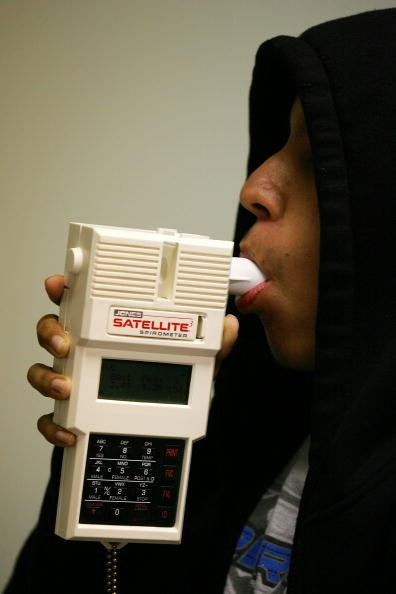
A group of researchers at the University of Missouri School of Medicine have found a promising application of a commonly used pulmonary function test in the early detection of asthma in pediatric patients. Immediate diagnosis of the disease could reduce the probable number of patients who would soon suffer serious lung complications if not properly managed.
ScienceDaily writes that nearly seven million children in the U.S. have been diagnosed of asthma and many more are still under cover. Such a disease affects the airways that carry air to and from a person's lungs, making any patient with the condition to have difficulties in breathing. Symptoms appear if there is an inflammation of the air passages caused by irritants, resulting to a temporary narrowing of the airways.
Usually, patients with asthma are given spirometry test - a pulmonary function test that measures airflow in different parts of the lungs. One part of such test that measures airflow in the large airway is what medical practitioners commonly used. Yet, MU researchers found a greater importance with the other part involving the smaller airway which for them is critical in identifying an imminent asthma.
"When the disease is still in the small airways, it tends to not show symptoms," says Peter Konig, M.D., professor emeritus of child health at the MU School of Medicine and pediatric pulmonary specialist, in the press release.
"By the time the disease gets to the large airways, patients typically cough, wheeze and experience shortness of breath," Dr. Konig adds.
With the team's analysis on more than 2,300 spirometry tests, it showed that asthma was detected much earlier by reading the airflow through the small bronchi as compared to the doctors' typical procedure of analyzing airflow obstruction in the large bronchi. Also, they noted that most cases of asthma start to emerge in the small airway before it moves up to the large airway.
"If you look at the small airway test, you can detect asthma before it worsens, and that means treatment starts earlier and results from the treatment are better," says Dr. Konig.
With this finding, the research team is also planning to use the same technique and assess if it can detect early stage cystic fibrosis in patients. This disease brings out the same symptoms as those of asthma, and also starts in the small air passage.
The study appears in the Journal of Asthma.



